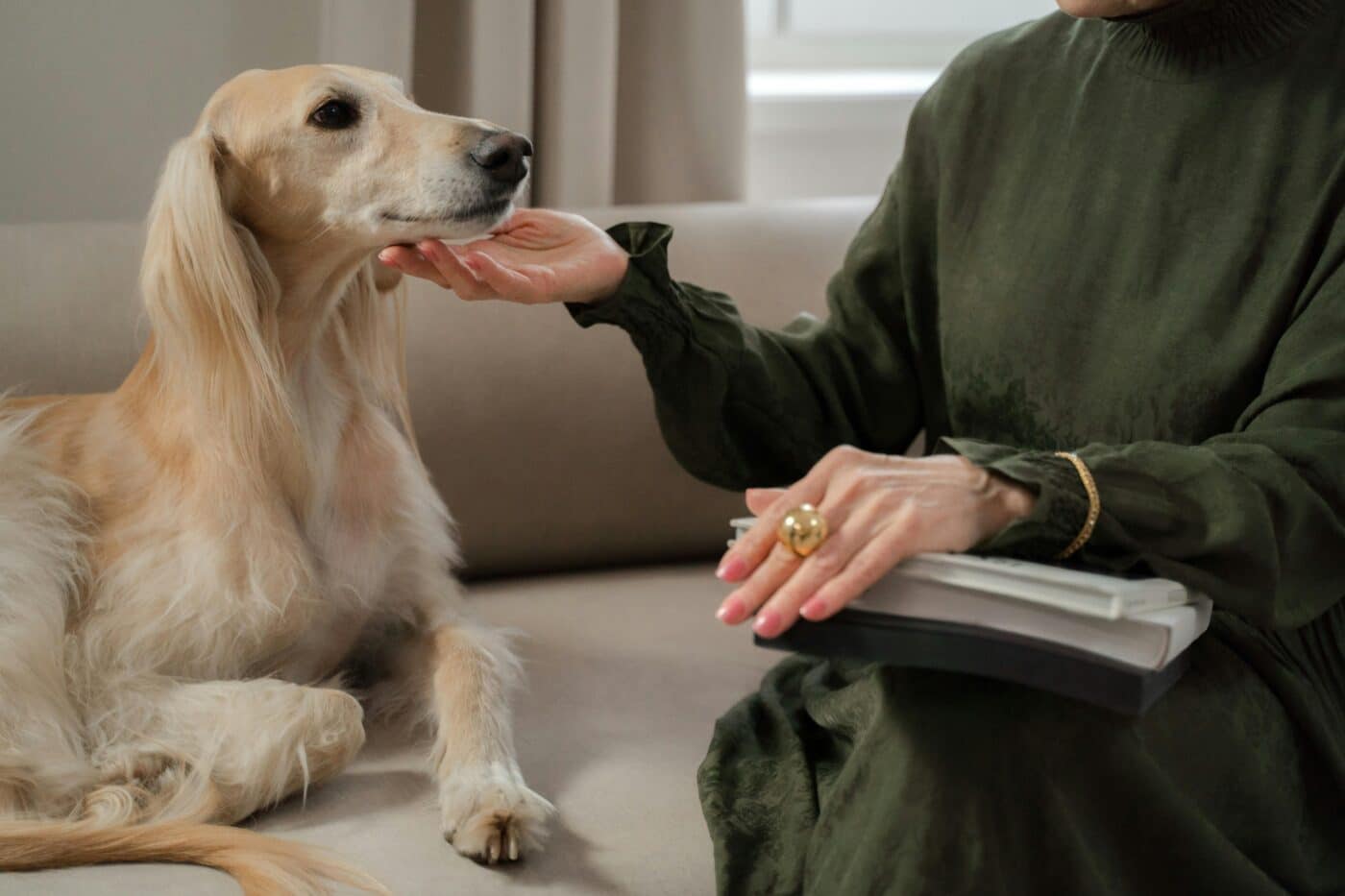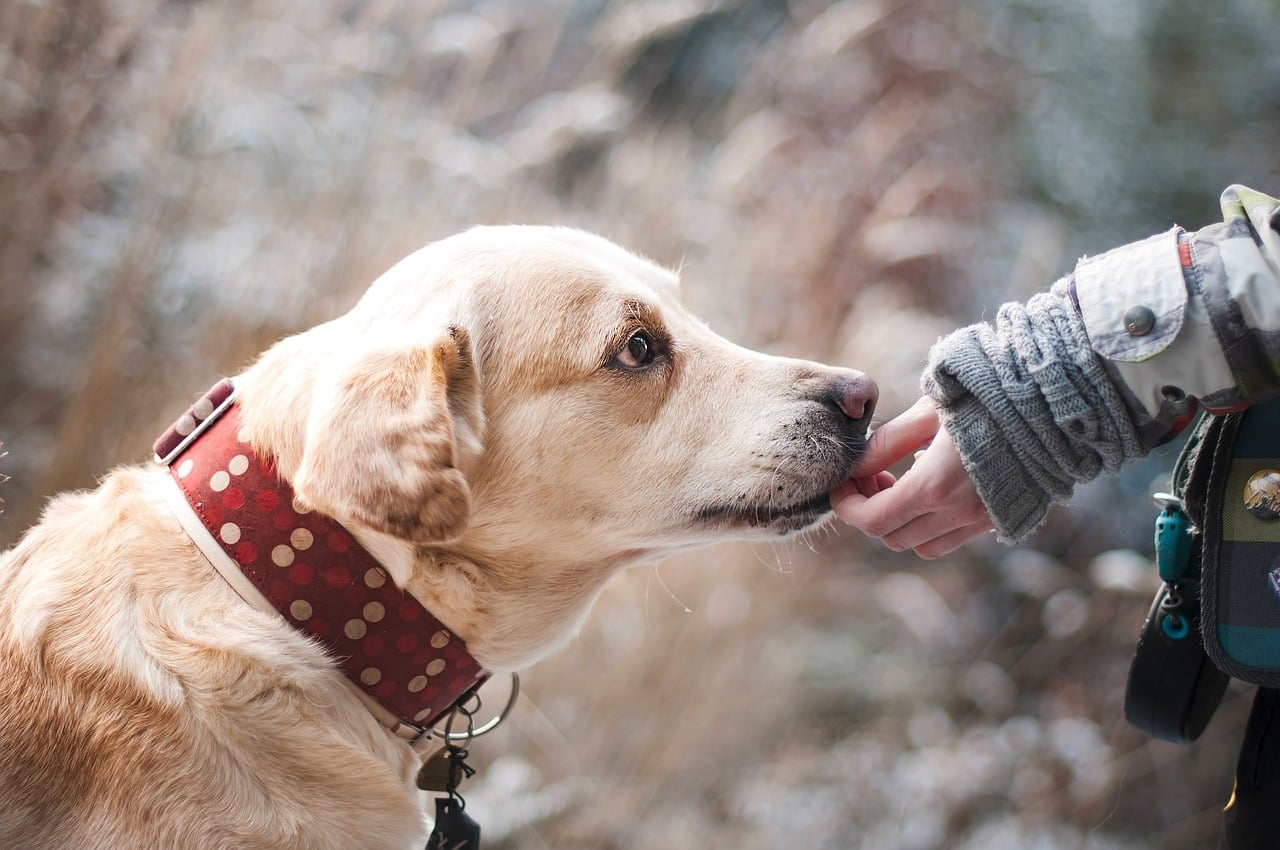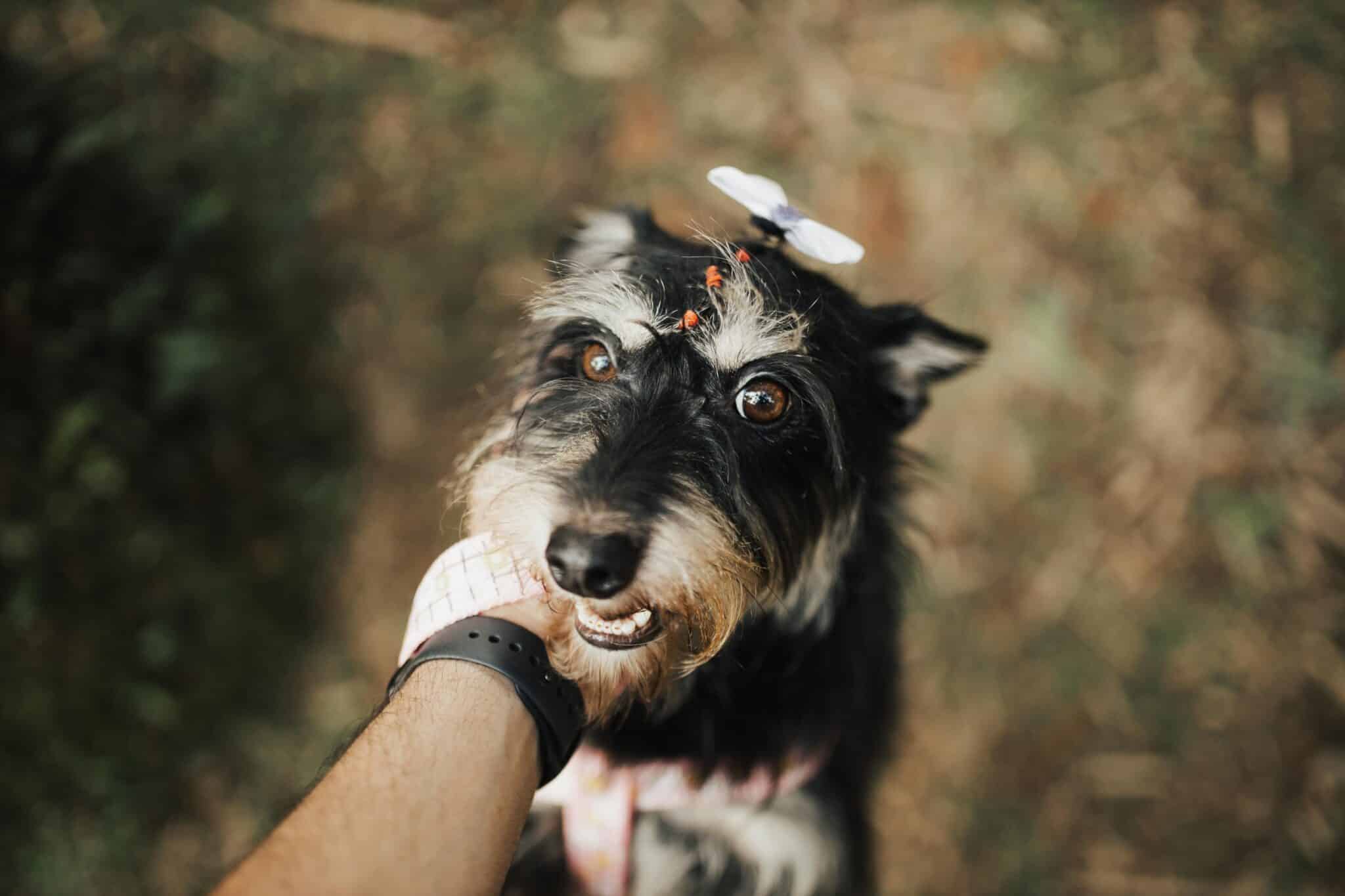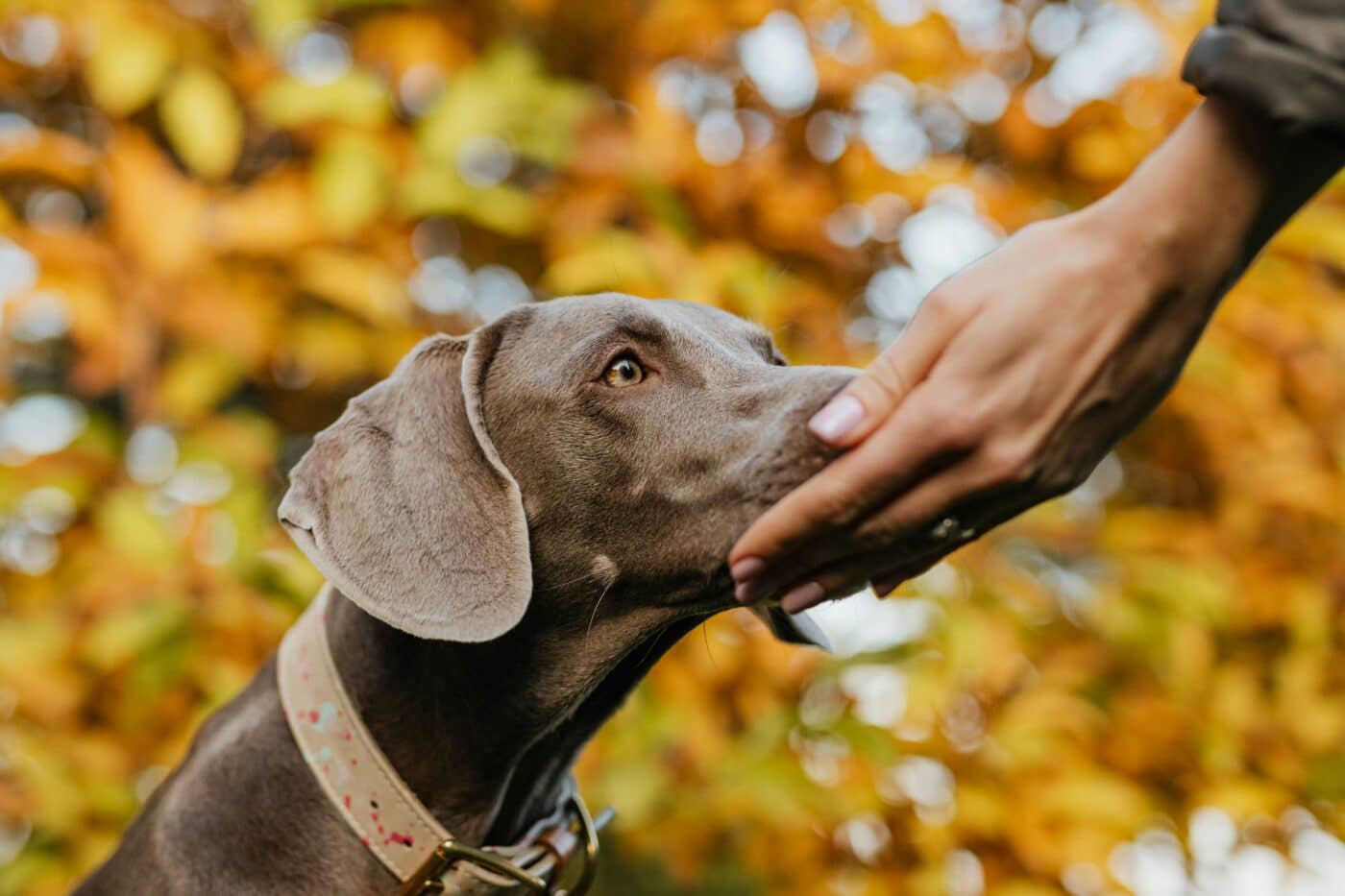 Shutterstock
Shutterstock
Dogs are often known as “man’s best friend,” but their skills go well beyond companionship. One impressive ability is their knack for sensing emotions, especially fear. With an extraordinary sense of smell, dogs detect chemical cues and subtle body language shifts that reveal how we feel. This isn’t just a myth—studies show dogs pick up on tiny changes in pheromones and cortisol, often sensing our fear before we’re aware of it ourselves. Their “fear-sensing” ability reflects the remarkable bond shared between humans and dogs.
The Power of the Canine Nose
 Shutterstock
Shutterstock
The sheer strength of a dog’s sense of smell lies at the heart of their ability to detect fear. Dogs possess around 300 million olfactory receptors in their noses, compared to the 5-6 million that humans have. This expansive olfactory system allows dogs to break down complex smells into individual components, picking up scents we wouldn’t even know existed. When a human experiences fear, certain pheromones and stress hormones, like adrenaline, are released and expelled through sweat. While humans may not notice these subtle changes, a dog’s nose is finely tuned to detect them, thanks to an olfactory system that is highly specialized for this exact purpose. With this natural talent, dogs don’t just smell the air; they can understand the entire environment, including the hidden emotions of those around them.
Why Dogs Pick Up on Stress Hormones
 Shutterstock
Shutterstock
Dogs are experts at detecting the stress hormones our bodies produce when we’re afraid, such as cortisol and adrenaline. This skill is deeply rooted in their evolutionary history, where it was advantageous to detect fear of potential prey or threats. In the wild, sensing fear in other animals helped dogs’ ancestors identify which prey might be weak or anxious and therefore easier to catch. For today’s domestic dogs, this ancient skill translates into an ability to sense fear in humans. When we release adrenaline and cortisol, our bodies emit subtle chemical changes that dogs can detect. Essentially, they smell the physical evidence of our emotions, allowing them to perceive our stress or fear almost instantaneously.
Evolutionary Advantages of Fear Detection
 Shutterstock
Shutterstock
Throughout their evolution, the ability to detect fear provided early canines with a clear survival advantage. Wild canines, including wolves, need to understand their environment and the emotional states of other animals to decide whether to approach or avoid potential threats. Being able to smell fear meant they could assess whether a creature was nervous and potentially defensive, or whether it might be an easier target. For domestic dogs, although they no longer need these skills for survival, this instinctive awareness of fear remains. Today, it’s redirected towards bonding with and understanding the humans in their lives, helping them to provide companionship and even protection when they sense we’re afraid.
Scent-Based Communication in the Animal Kingdom
 Shutterstock
Shutterstock
Dogs aren’t alone in using scent to interpret emotional states, but they’re particularly talented at it. Many animals rely on scent to communicate, leaving chemical markers to convey messages about territory, mating, or aggression. However, dogs have taken scent-based communication to a new level by honing in on human emotions through subtle scent changes. For example, dogs can even be trained to detect health conditions, like diabetes or certain types of cancer, by identifying distinct smells associated with these issues. Their ability to pick up on fear scent is just another example of how they can interpret complex information through their noses, which they combine with visual and auditory signals to gain a fuller understanding of what their human companions are feeling.
How Dogs Interpret Fear with Body Language
 Shutterstock
Shutterstock
Dogs don’t rely on scent alone; they use an impressive blend of senses to understand fear. Their acute awareness of human body language, combined with their ability to smell emotional changes, makes them highly perceptive companions. When a person is fearful, they might exhibit subtle physical changes, such as tense muscles or a rigid posture, which dogs pick up on immediately. Coupled with the “fear scent” their noses detect, these physical signals help dogs get a complete read on our emotional state. This combined sensory approach is part of why dogs can provide comfort or seem protective during frightening moments—they’re not just smelling our fear, they’re seeing it, too.
The Role of the Jacobson’s Organ
 Shutterstock
Shutterstock
One reason dogs are such skilled scent detectors is that they possess a unique anatomical feature called the Jacobson’s organ, or vomeronasal organ. Located at the roof of their mouth, this organ is specially adapted to detect pheromones, which are chemicals associated with emotional states like fear or excitement. When a dog takes in a deep sniff, they’re not just using their nose; they’re engaging this second scent receptor system that is particularly attuned to emotional cues. It’s almost like having an emotional radar that allows them to distinguish between normal and fear-induced smells, giving them a much richer understanding of the scents they encounter.
How Fear Detection Strengthens the Human-Dog Bond
 Shutterstock
Shutterstock
Dogs’ ability to detect fear and respond to it appropriately plays a significant role in strengthening their relationship with humans. By recognizing when their humans are distressed, dogs can provide reassurance, often without any formal training. This natural talent not only makes dogs exceptional companions but also fosters a sense of security and comfort for their human families. Whether they snuggle up next to you during a scary movie or nuzzle you when you’re nervous, dogs’ instinctive responses to our fear create a unique connection, making them more than just pets—they’re empathetic allies who intuitively understand and respond to our needs.
The Many Ways Dogs Help Us Overcome Fear
 Shutterstock
Shutterstock
Beyond detecting fear, dogs have a unique ability to help us manage and overcome it. Many studies have shown that simply petting a dog can reduce heart rate and lower cortisol levels, alleviating anxiety. For people with phobias or high stress, the presence of a calm dog can make a significant difference. This calming influence may stem from their capacity to detect fear and respond in ways that promote relaxation. As they pick up on our fear, they often respond with comforting behaviors, helping us stay grounded and ultimately feel safer. In this way, dogs don’t just smell fear—they actively work to help us overcome it.
When You’re Spooked, They’re Ready to Play Hero
 Shutterstock
Shutterstock
Dogs have an almost superhero-like quality in their ability to sense fear and step in to save the day. Whether it’s barking to ward off something they sense as a threat, licking away your nerves, or sitting right next to you as you clutch your favorite blanket, they’re always ready to help. For them, sensing fear isn’t just about understanding it—it’s about taking action to protect you. So, the next time you’re feeling anxious, just know that your furry friend’s nose is on duty, and they’re ready to be your trusty sidekick, whether you’re hiding from a thunderstorm or tiptoeing through a horror movie marathon.
When Sniffing Out Fear Becomes A Full-Time Job
 Shutterstock
Shutterstock
For our four-legged friends, keeping tabs on our emotions can seem like a round-the-clock job. Imagine your dog clocking in each morning, nose ready and tail wagging, only to spend the day “supervising” your feelings. Whether it’s an odd scent, a late-night scare, or your new fear of aging leftovers in the fridge, dogs treat it all with the utmost professionalism. So, hats off to our loyal companions, the “fear-detecting professionals,” who work tirelessly without ever asking for a day off—well, except maybe when the treat jar runs low!
 Toledo, United States.
Toledo, United States.